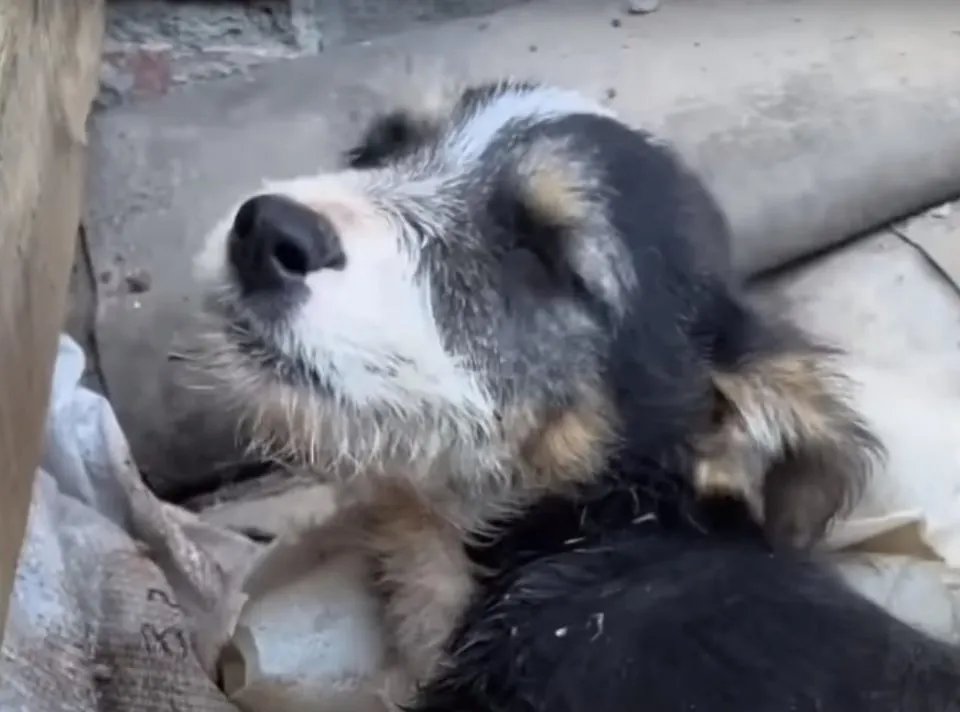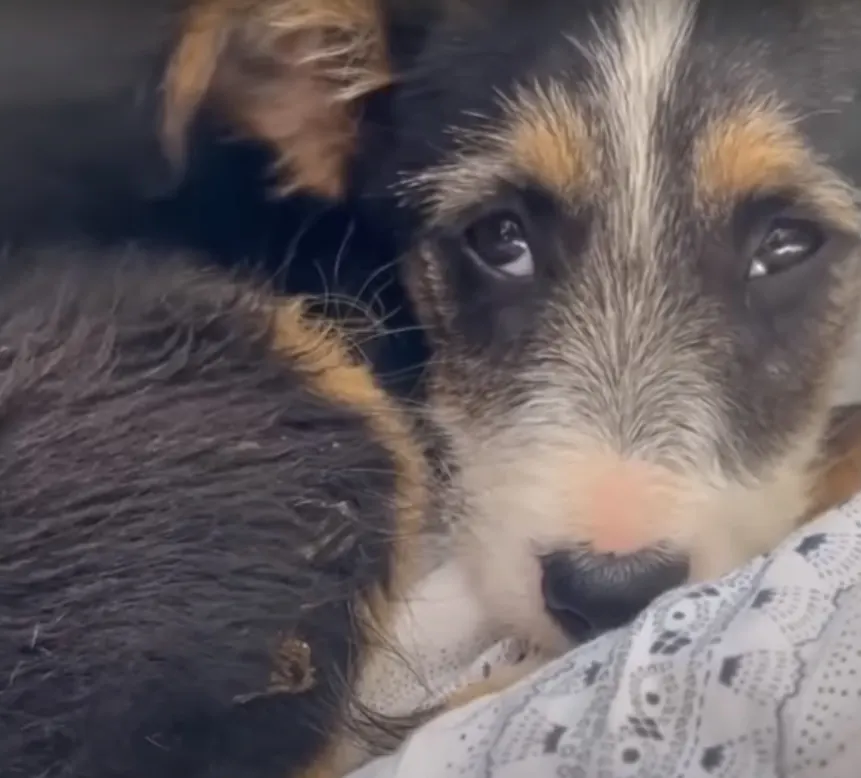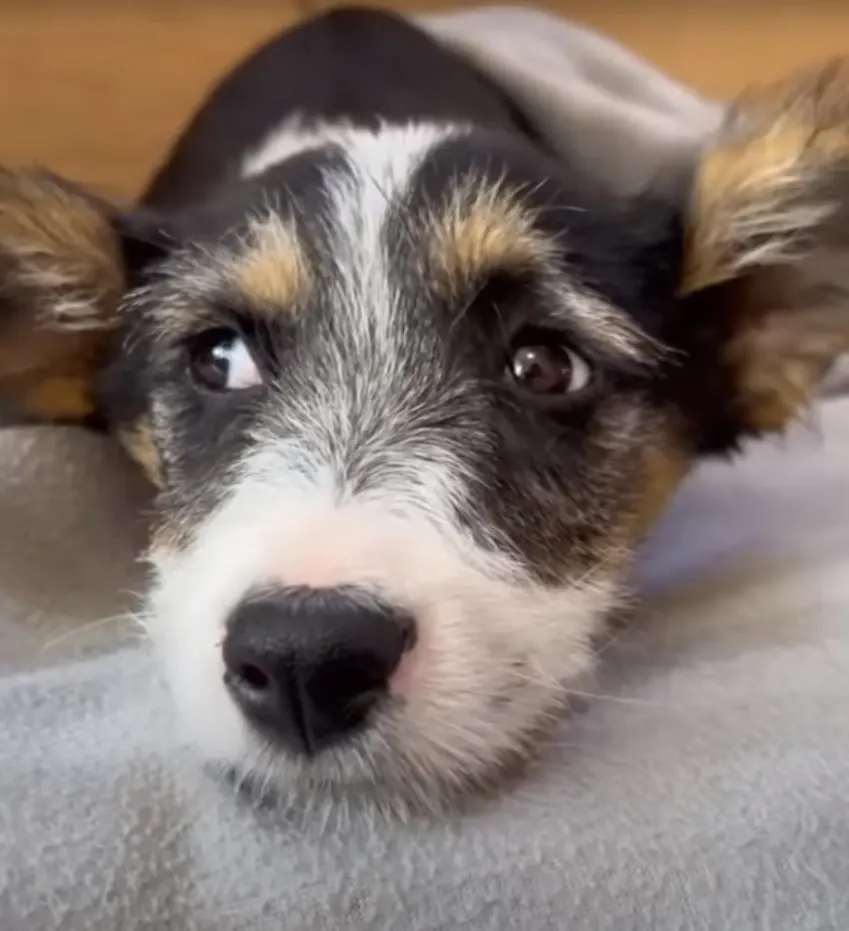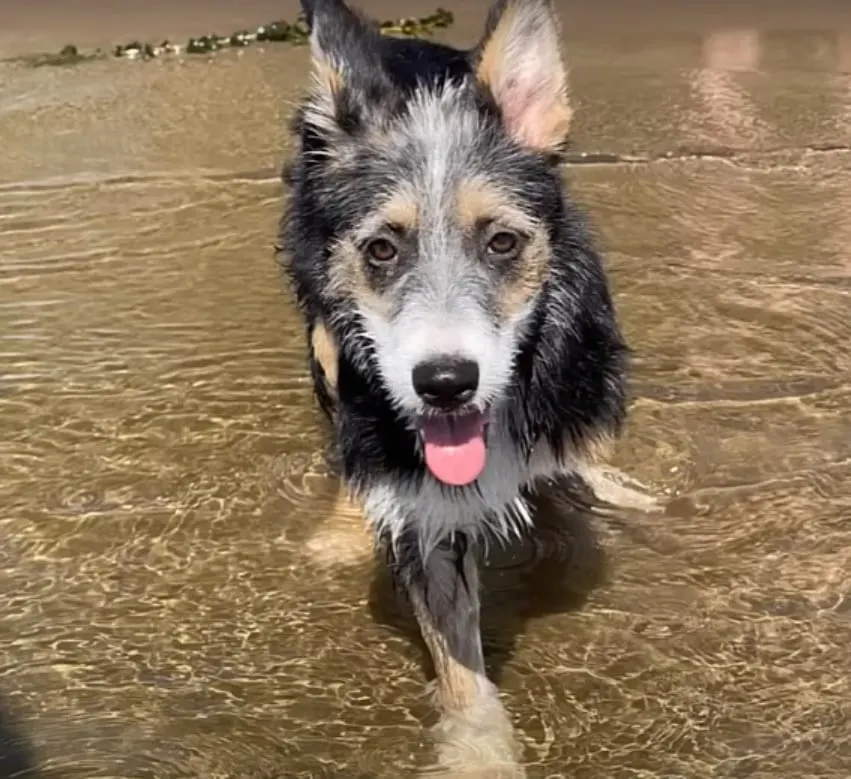Have you ever wondered if your dog was in some pain, but wasn’t showing any sign of it? Yeah, I have thought about that often as well.
Not just for my pup, but for my cat as well, and one true thing is that a lot of dogs will let you know that they are hurt and need help, but some don’t, which is unusual.
The dog we will be talking about in this story only let out faint noises because he was in very deep pain and just wanted to find someone to help him.
A Shocking Discovery

When a girl heard some sort of noise coming from a nearby scrap yard, she went to investigate.
The closer she got, the more real it sounded. She and other people with her noticed that somebody purposefully placed a lot of items to conceal something or somebody.
When they got through all of the mess, they were shocked to discover a seriously injured dog just lying there in pain.
They realized that one of his paws was crushed and the damage to it was severe. Who could have done something like that to this poor animal?

The people tried to get close to her, but she was so terrified that she backed away and was trying to let them know that she didn’t want anything.
She was in such pain for a long time, and she thought that these new people would continue hurting her.
All they wanted to do was help her. They managed to get her out of the pile of garbage she was staying in and place her in a car.
On the way to the vet, they noticed that she was crying quietly the whole time. They needed to help her soon.
A Slow Road To Recovery

An X-ray scan quickly showed that the paw was indeed crushed and there was no saving it. However, how to proceed next was a bit of a problem.
She couldn’t go to surgery because of her condition, but prolonging it would only cause more problems, so a really tough decision had to be made.
They performed the surgery on her the very next day and they had to amputate her leg completely due to necrosis in the ligaments and tissues.
There was no other way and it was just heartbreaking. Nobody thought this would have to be done, but there was still hope. It was not over for this sweet dog.
Her treatment was going to be a long one, but she had the most wonderful people there to guide her every step of the way.

The stitches were healing and she was slowly able to get on her feet over time. They thought it was too early for her to walk, but she surprised them all.
The dog, now named Chucha, found a way to get up and walk around. Despite her condition, she still enjoyed walking around and playing with other dogs. It was just amazing.
With time, she learned how to trust her rescuers and was no longer so timid. Chucha got along with other dogs so well that everyone believed she would make a miraculous recovery.
Everyone who met her was just so curious as to how this sweet dog ended up in this condition and how she is still so happy. Her rescuers were also baffled.
Soon after she recovered, however, one of the rescuers took Chucha in, and she now lives in a wonderful home and gets to play with other dogs. I am so glad it turned out well for her.
Ever noticed how your furry friend can’t help but let out a cute little sneeze while romping around? It’s like they’re adding a sprinkle of playfulness to the game. Dogs sneezing during playtime is more common than you might think. It’s not just a random occurrence; there’s a fascinating reason behind this adorable behavior.
Picture this: your pup chasing a ball, tail wagging with excitement, and then suddenly, a sneeze interrupts the action. It’s almost like a playful pause button. But why do dogs sneeze when they’re having fun? Understanding the reasons behind this quirky habit can give you a deeper insight into your canine companion’s world. So, next time your dog sneezes mid-play, know that there’s more to it than meets the eye.
Understanding Dog Behavior: Sneeze as a Play Signal
How Sneeze Helps in Dog Communication
When dogs sneeze during play, it’s their way of communicating and relaying signals to their playmates. The sneeze acts as a subtle, non-verbal cue to keep the play fun and engaging. It helps in maintaining the playful atmosphere without any verbal interruptions.
Differentiating Playful Sneezes from Health Concerns
It’s essential to differentiate between sneezes as a play signal and those indicating health issues in dogs. Playful sneezes are often accompanied by play bows, wagging tails, and relaxed body language. On the contrary, sneezes due to health concerns might be frequent, intense, or associated with other symptoms like nasal discharge or lethargy. Observing your dog’s overall behavior can help you distinguish between the two types of sneezes.
The Science Behind Playful Sneezing
Sneeze-Inducing Play Behaviors in Dogs
When your furry friend is engaging in play, they may exhibit specific behaviors that can trigger sneezing. Playful behaviors like quick movements, sudden stops, or rough play with other dogs can stimulate your dog to sneeze. These actions create an exciting and energized environment that might lead to playful sneezing.
The Role of Excitement and Arousal
Excitement and arousal play a crucial role in why dogs sneeze during play. When your pup is excited and fully immersed in the playful activity, their energy levels are high. This heightened state of excitement can result in your dog sneezing as a way to release built-up energy and show enthusiasm. The combination of excitement and arousal during playtime can manifest through playful sneezing as a natural response.
Play Sneeze Vs. Regular Sneeze
Identifying a Play Sneeze
A play sneeze in dogs is a unique form of communication that signifies they’re having a good time. It’s a quick, high-pitched sneeze that often happens when they’re engaged in playful activities. You can easily distinguish a play sneeze from a regular one by observing the context in which it occurs. If your dog is sneezing during play, it’s usually a positive sign that they’re enjoying themselves.
When to Worry About Your Dog’s Sneezing
While play sneezing is a normal behavior, if you notice persistent sneezing outside of playtime or other accompanying symptoms like nasal discharge, coughing, or lethargy, it may be a cause for concern. In such cases, it’s essential to consult your veterinarian to rule out any underlying health issues. Remember, a happy and healthy dog will have an occasional play sneeze, but any excessive or concerning sneezing should be addressed promptly.
Communication Through Body Language
The Importance of Non-Verbal Cues in Dogs
Understanding your furry friend’s non-verbal cues is vital in deciphering their emotions and intentions. Dogs communicate not only through barks and whines but also through body language. Playful sneezing is one such non-verbal communication method that can indicate excitement, happiness, and a positive playtime experience. By paying attention to these subtle signals, you can strengthen your bond with your canine companion and ensure they feel understood and valued.
The Spectrum of Play Signals in Dogs
Dogs employ a wide range of signals to convey their playful mood and engage in enjoyable interactions. Play signals can include tail wagging, play bows, vocalizations, and yes, even sneezing. Each signal serves a distinct purpose in enhancing social bonds, facilitating play initiation, and maintaining a harmonious play environment. By recognizing and responding to these play signals, you can actively participate in your dog’s play experiences and foster a deeper connection with them.
Encouraging Safe and Healthy Play
Tips to Foster Positive Playtime
When engaging with your dog during playtime, it’s essential to create a safe and positive environment. Start by providing appropriate toys that are safe for your dog to play with, avoiding items that could pose a choking hazard. You can also rotate the toys to keep the playtime engaging and prevent boredom.
Ensure that the play area is secure and free of any hazards that could harm your dog. This includes removing sharp objects, chemicals, and small items that your dog could swallow. A safe environment will help your dog feel comfortable and enjoy playtime without any risks.
Additionally, it’s important to establish boundaries during play to prevent over-excitement. Encourage gentle play and avoid rough behavior that could lead to stress or aggression. By setting clear boundaries, you create a positive play experience for both you and your dog, enhancing your bond and strengthening your relationship.
Recognizing Over-Stimulation and Stress Signals
As you enjoy playtime with your dog, pay attention to their body language and behavior to identify signs of over-stimulation or stress. Watch for cues such as excessive panting, growling, or avoidance behaviors, which may indicate that your dog is feeling overwhelmed.
If you notice these signs, take a break from play and allow your dog to relax and calm down. Engage in calming activities such as gentle petting or offering a favorite toy to help your dog de-stress. Understanding your dog’s stress signals and responding appropriately will help prevent negative experiences during playtime and promote a healthy, happy relationship.
Conclusion
Understanding why dogs sneeze during play is crucial for enhancing your bond with your furry friend. By recognizing the difference between playful sneezes and potential health concerns, you can ensure a safe and enjoyable play environment. Setting boundaries, providing safe toys, and being mindful of your dog’s stress signals are key to fostering a positive playtime experience. By responding to your dog’s cues and creating a relaxed atmosphere, you can strengthen your relationship and make playtime a rewarding and fulfilling experience for both you and your canine companion.
Frequently Asked Questions
Why do dogs sneeze during play?
Dogs sneeze during play as a form of communication and a play signal. It’s important to differentiate between playful sneezes and those indicating health issues.
How can I create a safe play environment for my dog?
Provide safe toys, secure the play area, and set boundaries to prevent over-excitement.
Why is it essential to recognize signs of over-stimulation and stress in dogs?
Recognizing these signs helps prevent escalating situations and allows you to help your dog relax and de-stress.
How can understanding my dog’s cues during playtime strengthen our bond?
Responding to your dog’s cues enhances the bond between you and your pet, ensuring a positive playtime experience and fostering a deeper connection.
[no_toc]

Hey there, I’m Janet Brooks, a dog-loving student from California. I’m all about helping pups in need, especially those without homes. Me and my awesome friends work together to give shelter and love to stray dogs. Oh, and I also write blogs about dogs to share helpful info.